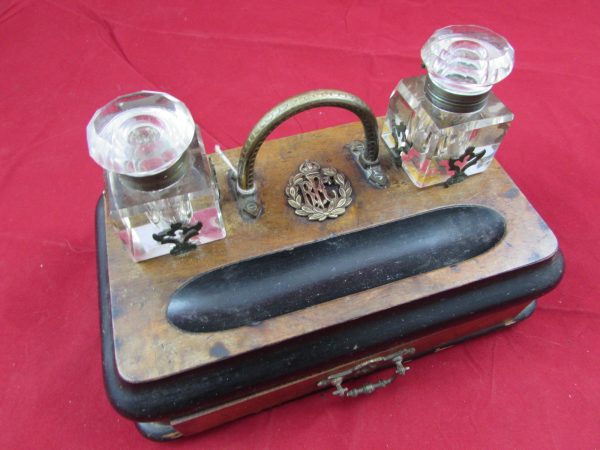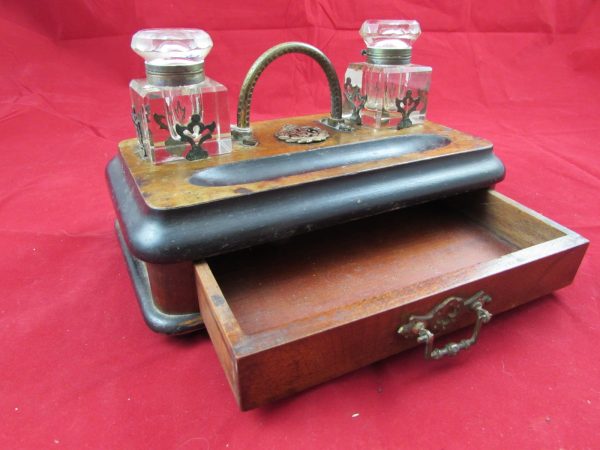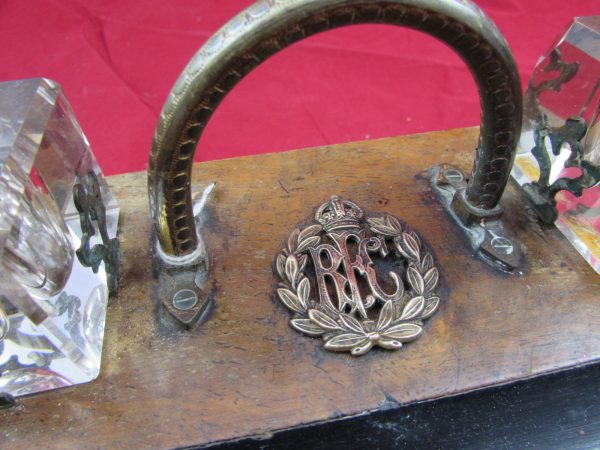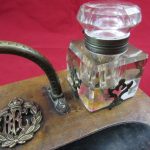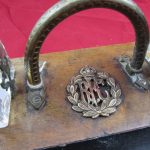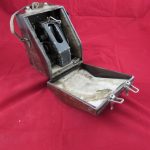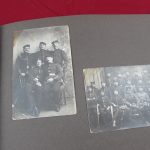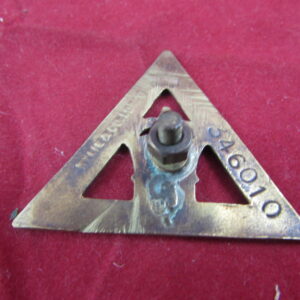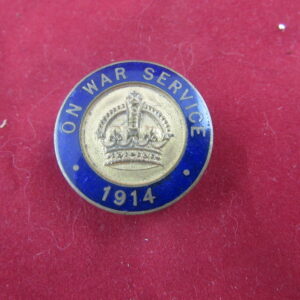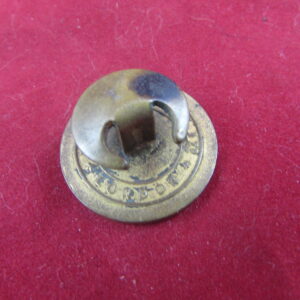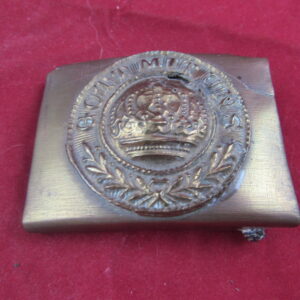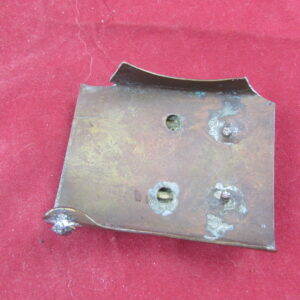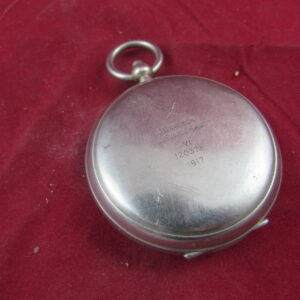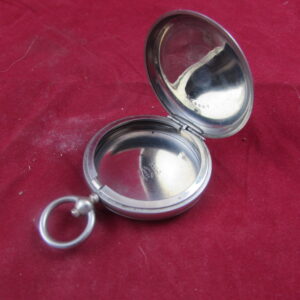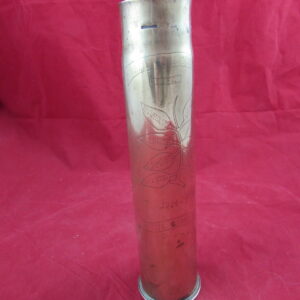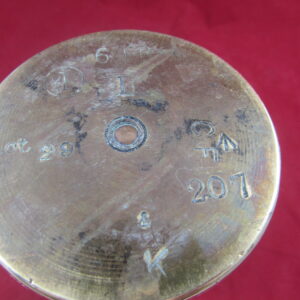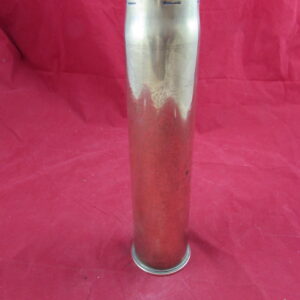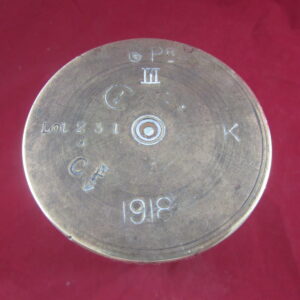RFC Table Inkstand.
Views: 464
£180.00
RFC Table Inkstand
- Description
- Shipping and Delivery
Description
RFC Table Inkstand.
Royal Fling Corps , inkstand.
One single drawer to the front , two glass inkwells with hinged lids, brass handle to drawer, brass carrying handle RFC badge to centre under carrying handle, brass mountings for inkwells. Wooden feet.
Lovely example , in totally original condition, See photo’s,
Size 10.5 inches in width,6 inches in depth, 6 inches in height inc handle, inkwells are 3 inch in height.
No damage to inkwells or to the top of the case , slight wear to were the draw has been used.
RFC Table Inkstand.
The Royal Flying Corps (RFC) was the air arm of the British Army before and during the First World War until it merged with the Royal Naval Air Service on 1 April 1918 to form the Royal Air Force. During the early part of the war, the RFC supported the British Army by artillery co-operation and photographic reconnaissance. This work gradually led RFC pilots into aerial battles with German pilots and later in the war included the strafing of enemy infantry and emplacements, the bombing of German military airfields and later the strategic bombing of German industrial and transport facilities.
At the start of World War I the RFC, commanded by Brigadier-General Sir David Henderson, consisted of five squadrons – one observation balloon squadron (RFC No 1 Squadron) and four aeroplane squadrons. These were first used for aerial spotting on 13 September 1914 but only became efficient when they perfected the use of wireless communication at Aubers Ridge on 9 May 1915. Aerial photography was attempted during 1914, but again only became effective the next year. By 1918, photographic images could be taken from 15,000 feet and were interpreted by over 3,000 personnel. Parachutes were not available to pilots of heavier-than-air craft in the RFC – nor were they used by the RAF during the First World War – although the Calthrop Guardian Angel parachute (1916 model) was officially adopted just as the war ended. By this time parachutes had been used by balloonists for three years.[1][verification needed][2]
On 17 August 1917, South African General Jan Smuts presented a report to the War Council on the future of air power. Because of its potential for the ‘devastation of enemy lands and the destruction of industrial and populous centres on a vast scale’, he recommended a new air service be formed that would be on a level with the Army and Royal Navy. The formation of the new service would also make the under-used men and machines of the Royal Naval Air Service (RNAS) available for action on the Western Front and end the inter-service rivalries that at times had adversely affected aircraft procurement. On 1 April 1918, the RFC and the RNAS were amalgamated to form a new service, the Royal Air Force (RAF), under the control of the new Air Ministry. After starting in 1914 with some 2,073 personnel, by the start of 1919 the RAF had 4,000 combat aircraft and 114,000 personnel in some 150 squadrons.
At this time, Antiqurio ships to locations within the United Kingdom mainland. Items can be shipped worldwide by prior agreement please contact us. The risk of loss and title for all items ordered on this website pass to you when the items is delivered to the shipping carrier. We are unable to calculate shipping automatically for multiple items when shipping internationally please contact us by email if you wish to purchase more than one item and live outside of the UK; we are working to resolve this
International
Customs and import duties may be applied to International orders when the shipment reaches its destination. This is not imposed by Antiqurio and these charges are the responsibility of the recipient of your order and are likely to vary from country to country. Contact your local customs office for details.
Shipping laws are different in each country. It is your responsibility to check with your Customs office to verify whether the country to which you are shipping permits the shipment of your products. Antiqurio is not responsible for any direct, indirect, punitive, or consequential damages that arise from improper international shipping practices.
